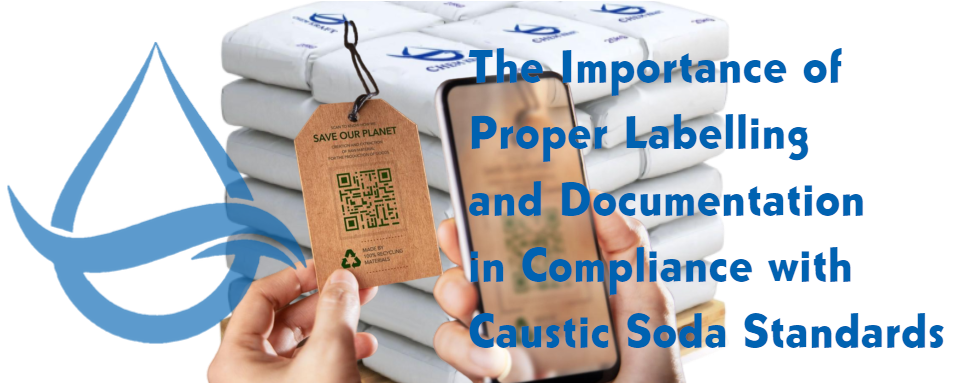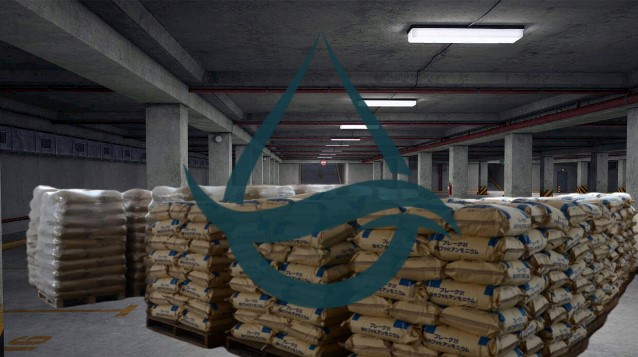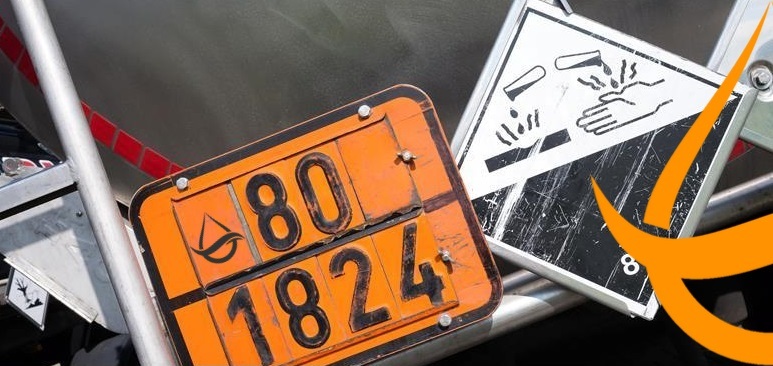1. Introduction: Understanding the Significance of Proper Labelling and Documentation
Proper labelling and documentation play a crucial role in ensuring compliance with caustic soda standards within the chemical industry. Caustic soda, also known as sodium hydroxide, is a highly corrosive and hazardous substance that requires careful handling and storage. Accurate labelling provides essential information about the contents, potential hazards, and handling instructions, while comprehensive documentation ensures regulatory compliance and enhances safety measures. This article explores the importance of proper labelling and documentation in compliance with caustic soda standards, highlighting the potential risks of non-compliance and offering best practices to maintain safety, mitigate risks, and meet regulatory requirements.
1. Introduction: Understanding the Significance of Proper Labelling and Documentation
1.1 Importance of Labelling and Documentation in Chemical Industry
In the chemical industry, proper labelling and documentation are like the Batman and Robin of safety and compliance. They work together to protect workers, the environment, and ensure that everyone stays on the right side of the law. Labelling provides crucial information about the contents of a chemical, while documentation keeps a detailed record of how it’s handled, stored, and disposed of. It’s like having a cheat sheet for chemical safety.
1.2 Overview of the Article
In this article, we’ll dive into the world of caustic soda and explore why proper labelling and documentation are essential in maintaining compliance with its standards. We’ll start by understanding caustic soda and the regulations surrounding its handling. Then, we’ll take a closer look at the importance of accurate labelling to prevent any hazardous mix-ups and ensure safety. Finally, we’ll explore how proper documentation practices can help you stay on the right side of the law and enjoy the benefits of compliance.
2. Overview of Caustic Soda Standards and Compliance Requirements
2.1 Understanding Caustic Soda and its Properties
Caustic soda, also known as sodium hydroxide, is like the superhero of chemicals – it has the power to dissolve almost anything it touches. It’s a highly corrosive substance that can cause severe burns and eye damage if mishandled. That’s why it’s crucial to understand its properties and take the necessary precautions when working with it.
2.2 Regulatory Authorities and Standards for Caustic Soda Handling
To ensure the safe handling of caustic soda, various regulatory authorities have established standards and guidelines. These include organizations like the Occupational Safety and Health Administration (OSHA) and the National Fire Protection Association (NFPA). These standards outline proper handling procedures, storage requirements, and safety measures to protect workers and the environment.
3. Importance of Accurate Labelling in Caustic Soda Handling and Storage
3.1 Hazards Associated with Improper Labelling
Imagine a world without labels – chaos would ensue! When it comes to caustic soda, improper labelling can have dire consequences. Without clear and accurate labels, workers might mistake it for a harmless substance, leading to accidents and injuries. Proper labelling is crucial for identifying the contents, hazards, and appropriate handling procedures associated with caustic soda.
3.2 Ensuring Safety and Risk Mitigation through Clear Labelling
Clear labelling acts as a superhero cape, empowering workers with the knowledge they need to handle caustic soda safely. It enables them to identify the chemical, understand its hazards, and take necessary precautions. By using labels that are easy to read and understand, we can prevent accidents, protect workers’ well-being, and keep our workplaces safe from the corrosive clutches of caustic soda.
4. Ensuring Compliance through Proper Documentation Practices
4.1 Legal and Regulatory Requirements for Documentation
Documenting your caustic soda handling practices isn’t just a fancy paperwork exercise – it’s a legal and regulatory requirement. Authorities like OSHA require comprehensive records to be maintained to demonstrate compliance with safety standards. These records should detail important information such as the quantity of caustic soda handled, storage conditions, training records, and emergency response plans.
4.2 Benefits of Effective Documentation in Compliance
While proper documentation may seem like a tedious task, it comes with its perks. Besides keeping you on the right side of the law, effective documentation practices provide a roadmap for safety and compliance. They help you identify potential areas for improvement, track any incidents or near misses, and ensure that you’re consistently following best practices. Plus, if an inspector comes knocking, you’ll have all the necessary records ready to go, making their visit as smooth as your favorite superhero’s landing.
5. Best Practices for Labelling and Documenting Caustic Soda Containers
5.1 Clear and Standardized Labeling Guidelines
When it comes to labeling caustic soda containers, clarity is key. Make sure the labels are easy to read and understand, even for those who may not be familiar with the product. Use standardized labeling guidelines to ensure consistency across all containers. This will help prevent confusion and potential mishaps during handling and storage.
5.2 Documentation Requirements for Transport and Storage
Proper documentation is essential for the safe transport and storage of caustic soda. Keep comprehensive records of all shipments, including details such as origin, destination, and quantity. This information not only helps with compliance but also assists in traceability and accountability should any issues arise. Remember, meticulous documentation is your ticket to a smooth and hassle-free process.
6. The Role of Training and Education in Caustic Soda Labelling and Documentation
6.1 Importance of Training for Employees Handling Caustic Soda
Handling caustic soda requires the right knowledge and skills. Providing training for employees who work with this powerful substance is crucial for their safety and the integrity of your operations. Training should cover proper handling techniques, emergency procedures, and, of course, the importance of accurate labeling and documentation. Remember, a well-trained workforce is your first line of defense against potential accidents.
6.2 Educating Employees on Proper Labelling and Documentation Procedures
It’s not enough to just train your employees; you must also educate them on the specific procedures for labeling and documenting caustic soda containers. Clearly communicate the guidelines and requirements, and ensure everyone understands the importance of adhering to them. Encourage open communication and provide resources for employees to refer to when in doubt. With the right education, your team will be empowered to meet the highest compliance standards.
7. Auditing and Monitoring: Maintaining Compliance with Caustic Soda Standards
7.1 Regular Audits for Labelling and Documentation Compliance
To stay on top of your caustic soda labeling and documentation game, regular audits are a must. Conducting routine checks ensures that everything is in order and that no deviations or overlooked issues compromise compliance. Keep a meticulous eye on the labels, documentation procedures, and overall compliance status. Remember, prevention is always better than cure.
7.2 Continuous Monitoring and Improvement of Processes
Compliance is not a one-time thing; it’s an ongoing effort. Make monitoring and improvement a part of your routine. Regularly review and assess your labeling and documentation processes. Are there areas that could be streamlined or enhanced? Actively seek feedback from your team and keep an eye out for industry updates and best practices. By embracing a mindset of continuous improvement, you’ll ensure your compliance efforts remain top-notch.
8. Consequences of Non-Compliance: Risks and Liabilities
8.1 Legal and Financial Consequences of Failing to Meet Labelling and Documentation Standards
Failing to comply with caustic soda labeling and documentation standards can have serious repercussions. From legal penalties to financial liabilities, the consequences can be costly. Non-compliance may result in fines, lawsuits, and damaged business relationships. It’s essential to prioritize compliance to protect your business and ensure the safety of those involved in handling caustic soda.
8.2 Reputation and Customer Trust Impact of Non-Compliance
The impact of non-compliance goes beyond legal and financial consequences. Your reputation and customer trust can suffer. Word spreads quickly, and a reputation for lax compliance practices can tarnish your brand image. Customers want to know they are working with a reliable and responsible supplier. By prioritizing compliance, you not only ensure the safety of your operations, but you also build trust and loyalty among your customers.
Remember, when it comes to caustic soda labeling and documentation, it’s not just about ticking boxes—it’s about prioritizing safety, accuracy, and accountability. By following best practices, educating your team, and maintaining compliance, you can navigate the caustic waters with confidence and avoid any corrosive mishaps.
In conclusion, proper labelling and documentation are vital aspects of compliance with caustic soda standards. By implementing clear and accurate labelling practices, along with thorough documentation procedures, organizations can enhance safety measures, reduce risks, and ensure adherence to regulatory requirements. It is essential for employees to receive appropriate training and education on labelling and documentation procedures to maintain a safe working environment. Regular auditing and monitoring processes should be established to identify any potential gaps in compliance and facilitate continuous improvement. By prioritizing proper labelling and documentation, companies can uphold their responsibilities, avoid legal and financial consequences, and safeguard their reputation in the chemical industry.
FAQ
1. Why is proper labelling important when handling caustic soda?
Proper labelling is crucial when handling caustic soda because it is a highly corrosive and hazardous substance. Clear and accurate labelling provides critical information about the contents, potential hazards, and proper handling instructions, ensuring the safety of individuals who come into contact with the substance.
2. What are the consequences of non-compliance with caustic soda labelling and documentation standards?
Non-compliance with caustic soda labelling and documentation standards can have serious consequences. It can result in legal and financial liabilities, including fines, penalties, and legal actions. Additionally, non-compliance can damage a company’s reputation and erode customer trust, leading to a loss of business opportunities.
3. How can employees be trained on proper caustic soda labelling and documentation procedures?
Employees should receive comprehensive training on proper caustic soda labelling and documentation procedures. This training can be conducted through workshops, educational sessions, and hands-on exercises. It is essential to educate employees about the hazards associated with caustic soda, proper labelling practices, and the importance of accurate documentation to ensure their understanding and compliance.
4. What steps can organizations take to maintain compliance with caustic soda standards?
Organizations can take several steps to maintain compliance with caustic soda standards. These include implementing standardized labelling guidelines, conducting regular audits and inspections to ensure compliance, providing ongoing training and education for employees, and continuously monitoring and improving labelling and documentation processes. By following these best practices, organizations can enhance safety measures, reduce risks, and meet regulatory requirements.











